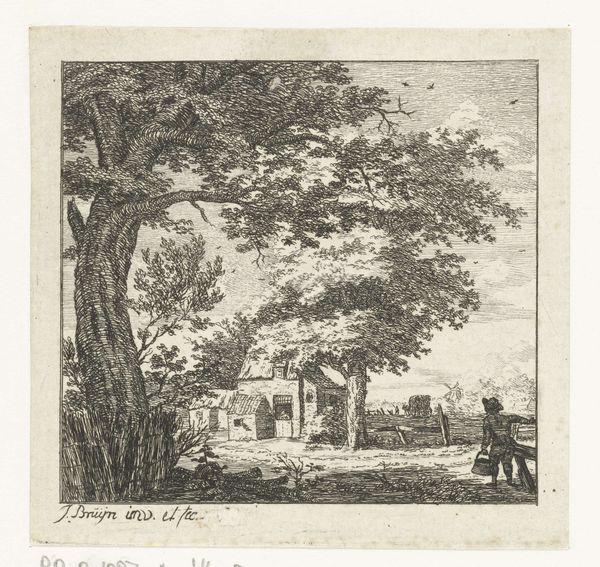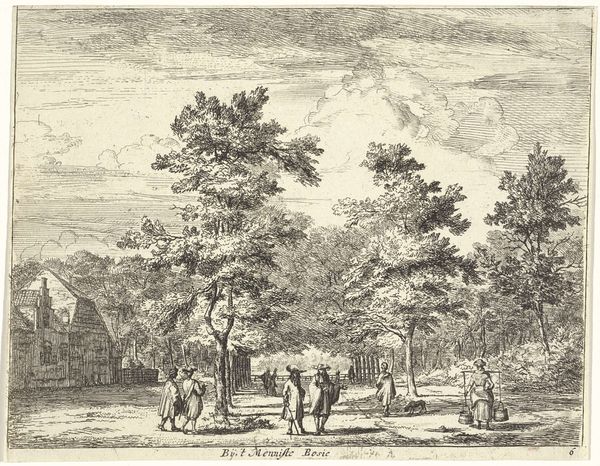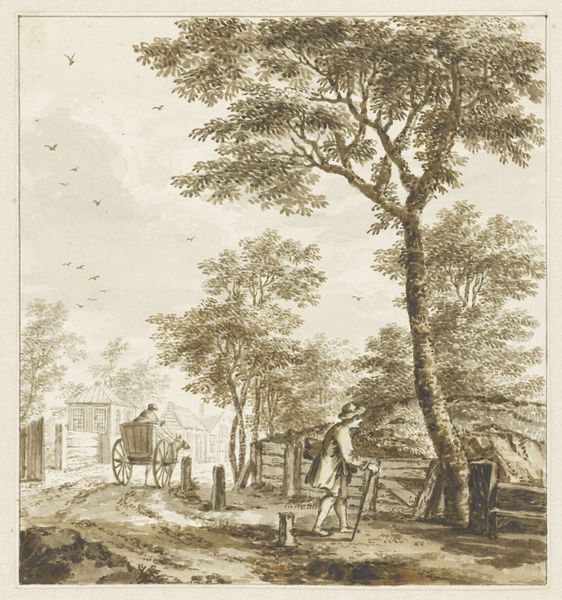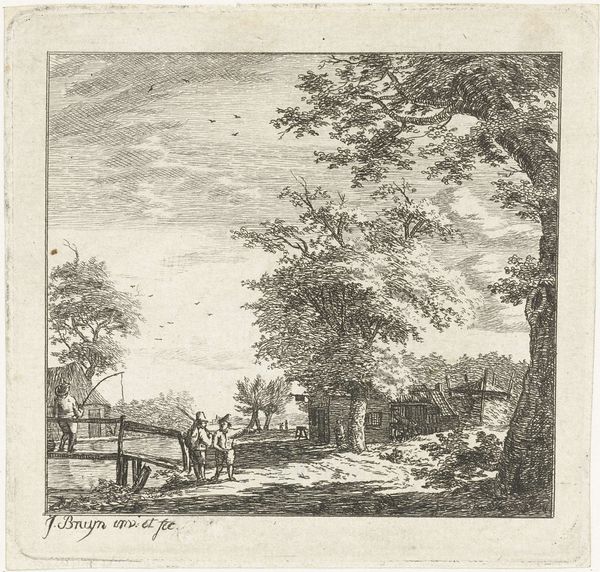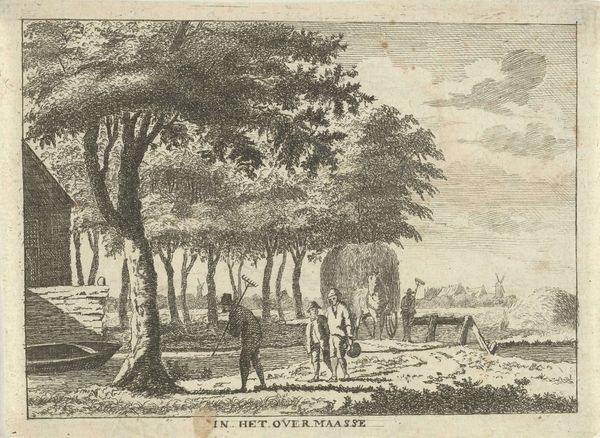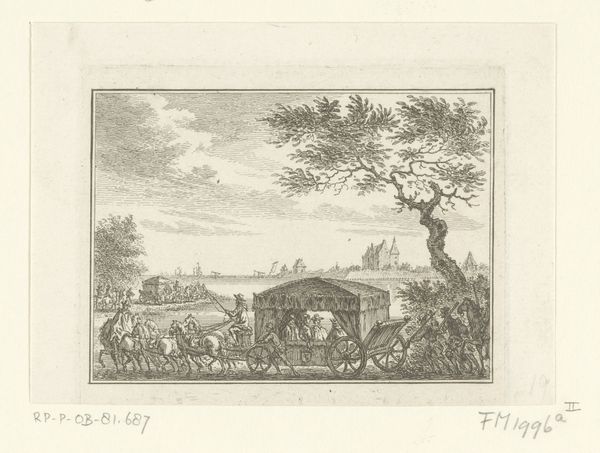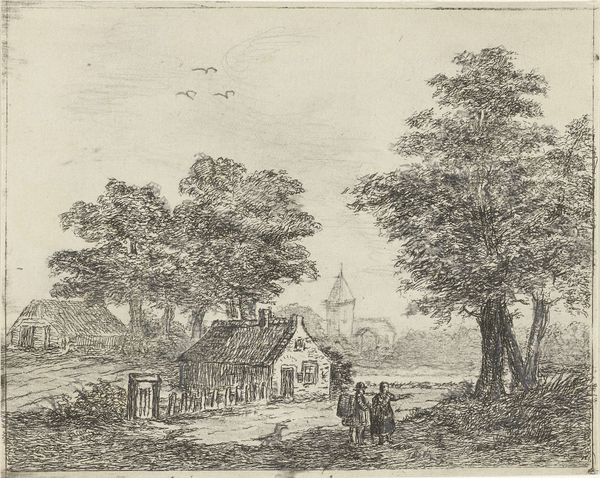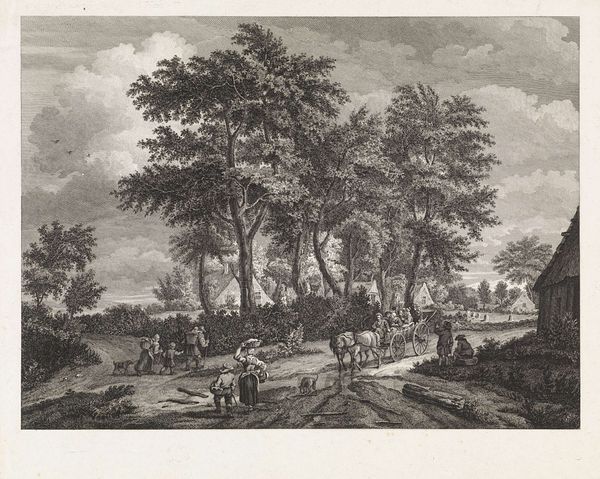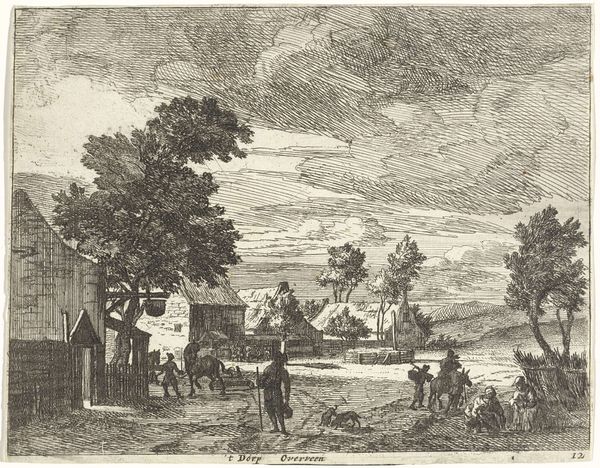
print, engraving
#
dutch-golden-age
# print
#
landscape
#
genre-painting
#
engraving
#
realism
Dimensions: height 84 mm, width 90 mm
Copyright: Rijks Museum: Open Domain
Curator: What strikes you most when you first glance at this detailed little scene? It's called "Dorpsgezicht", or "Village View," etched in 1777 by Johanna de Bruyn. Editor: Its captivating depth and realism draw me in—a certain wistful quiet permeates the village. There's a palpable stillness to the moment, amplified by the use of grayscale engraving. Curator: Absolutely. De Bruyn was deeply immersed in the Dutch Golden Age tradition of landscape art, and that sense of realism shines through. Notice how she meticulously rendered the play of light and shadow across the village structures and foliage using the printmaking medium. Editor: And look closely, and you see how expertly she created that depth. Linear perspective governs the arrangement—smaller structures further back—but the varying densities of engraved lines establish spatial zones too. It's very deliberate and beautifully controlled. Curator: This engraving provides more than a slice of idyllic scenery. Its inclusion of the local figures going about their business reveals a keen interest in the everyday experiences and class and social relationships present during the late 18th Century, and serves almost as a window into life itself. The men in the foreground gesturing, perhaps in the middle of a long gossip, and the shadowed figure peeking out the windows is an example. I wonder what stories are being written in that humble locale! Editor: I can’t help but analyze the placement of figures against the horizon. How they function to lead our eye through the frame is worth pausing for. Semiotically, these human elements guide our emotional and cultural interpretation of this community landscape. Curator: The Dutch landscape painters of this era saw their work, in part, as chronicling what was quickly changing around them, capturing on paper what they knew might not remain forever. I believe that this engraving provides us not only with this scene itself, but a poignant sense of what it might have been like to observe such a village in real life. Editor: You’re right. Analyzing how formal elements and cultural references intertwine enriches this viewing, bringing a quiet 18th century Netherlands locale to life, centuries later. Thank you, Johanna de Bruyn, for preserving this village through the craft of etching!
Comments
No comments
Be the first to comment and join the conversation on the ultimate creative platform.
